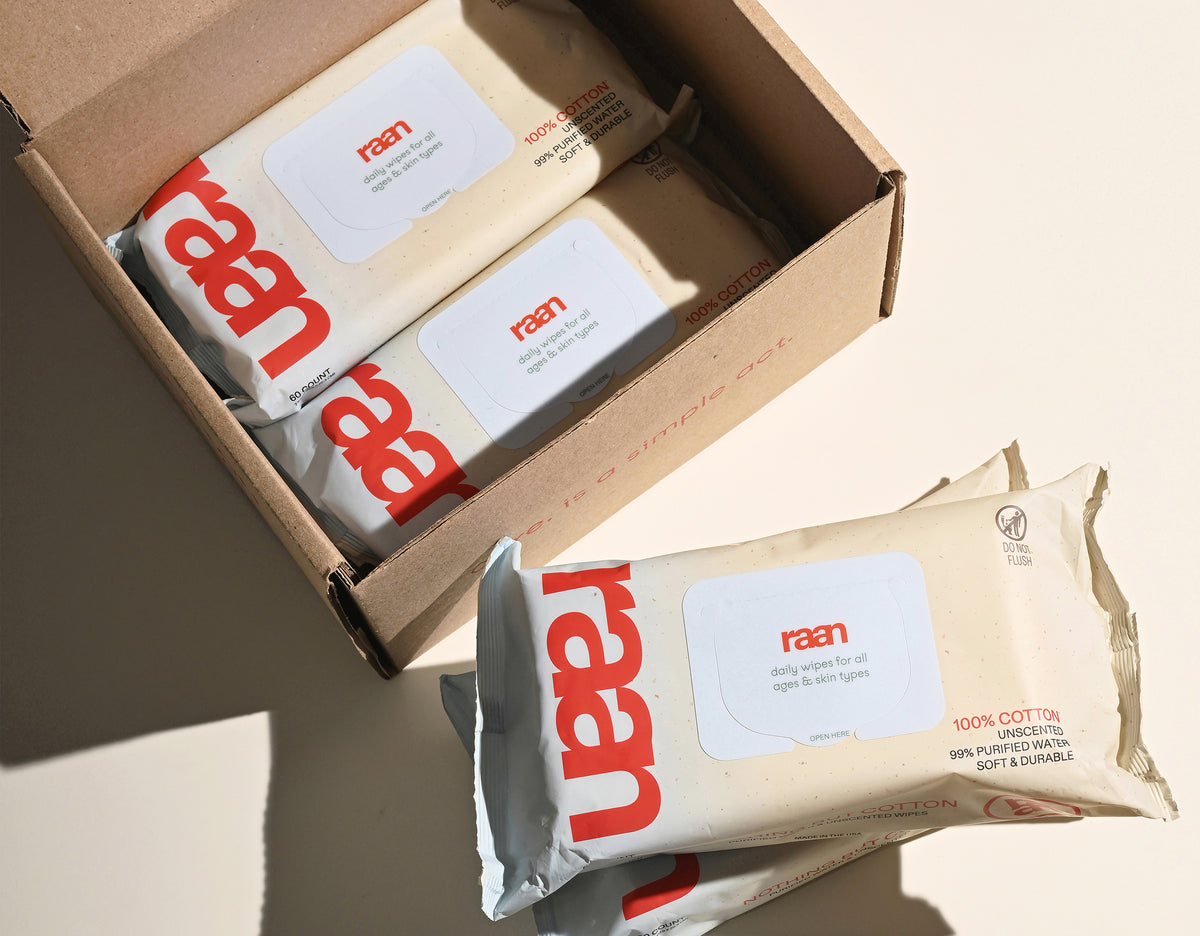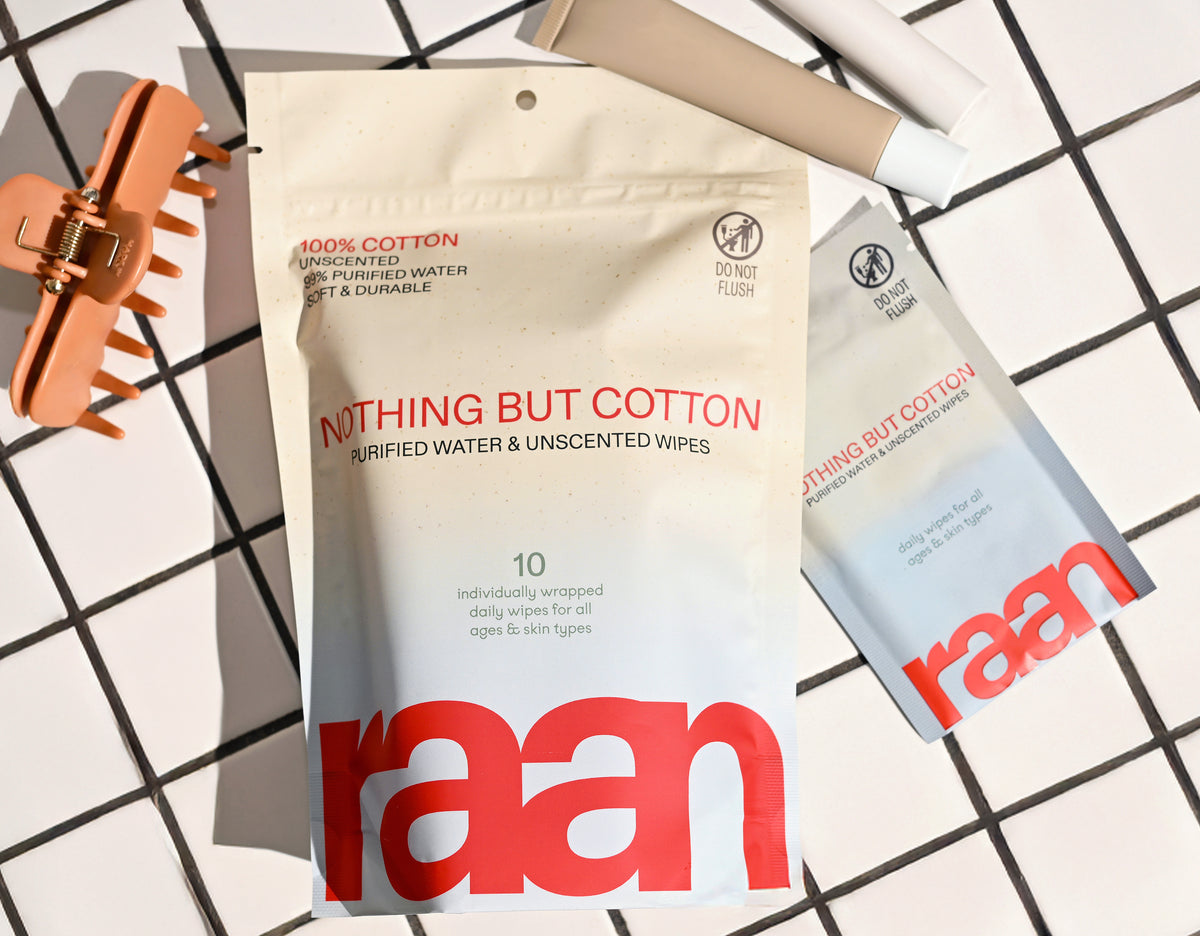Key Takeaways
- A safe baby wipe typically has a minimal ingredient list with clear purposes for each component.
- EWG Verified certification or similar third-party safety validation is important for ensuring product safety.
- Safe wipes avoid synthetic fragrances, parabens, and harsh preservatives.
- Unbleached, natural fiber wipes free from microplastics are preferred for safer use.
- Rico baby wipes use conventional synthetic preservatives and lack independent safety certifications.
Table of Contents
- Defining "Safe" in Baby Wipes: What Parents Really Need to Know
- What's Inside Rico Baby Wipes? Ingredient-by-Ingredient Breakdown
- Are Rico Baby Wipes Hypoallergenic, Alcohol-Free, and Fragrance-Free?
- Ingredient Risk Deep Dive: What Science Says About Common Wipe Additives
- Certifications & Safety Standards: How Do Rico Baby Wipes Measure Up?
- Reading Baby Wipe Labels Like a Pro: How to Spot Red Flags and Green Lights
- Practical Guide: Safe Use and Storage of Rico Baby Wipes
- Baby Rash or Irritation? What to Do if Your Child Reacts to Wipes
- Rico Baby Wipes vs. Other Popular Brands: Ingredient Safety and Transparency
- Rico Baby Wipes vs. Safer Alternatives: A Material-First Comparison
- Making Informed Wipe Choices: What Matters Most in 2025
- The Verdict: Rico's Place in Today's Safety Landscape
Are Rico Baby Wipes Safe? A Transparent Guide for Conscious Care Seekers
What Makes a Baby Wipe "Safe"?
- Minimal ingredient list with clear purposes for each component
- EWG Verified certification or similar third-party safety validation
- No synthetic fragrances, parabens, or harsh preservatives
- Unbleached, natural fiber construction free from microplastics
- Full ingredient transparency without vague "proprietary blend" claims
While Rico wipes don't raise major red flags, they fall short of the gold standard for truly clean care. The brand relies on conventional synthetic preservatives and lacks independent safety certifications that give parents complete peace of mind. Unbleached, 100% cotton baby wipes for sensitive skin offer a safer and more transparent alternative for families seeking the highest standards.
For those who want a convenient, on-the-go option, individually wrapped cotton wipes provide the same gentle, plastic-free clean in a portable format.
Defining "Safe" in Baby Wipes: What Parents Really Need to Know
"Safe" in baby wipes means more than just avoiding immediate irritation. True safety encompasses allergenicity testing, toxicity screening, and long-term skin health considerations. Marketing claims like "hypoallergenic" and "dermatologist-tested" sound reassuring but often lack standardized definitions or rigorous testing protocols.
Independent standards matter because they provide third-party verification beyond a brand's internal testing. The Environmental Working Group's EWG Verified program, for example, requires comprehensive ingredient screening and ongoing monitoring, a level of scrutiny that goes far beyond basic regulatory compliance. For more on what goes into baby wipes and how to choose the safest options, see what are wipes made of.
When a wipe isn't truly safe, consequences range from immediate contact dermatitis and diaper rash to potential long-term exposure to endocrine disruptors. For babies with developing skin barriers and immune systems, even "mild" irritants can trigger sensitivities that persist into childhood.
What's Inside Rico Baby Wipes? Ingredient-by-Ingredient Breakdown

Rico baby wipes contain approximately 8-12 ingredients, though the exact formulation varies by product line. Here's what you'll typically find and why each component is included:
| Ingredient | Purpose | Source | Safety Notes |
|---|---|---|---|
| Purified Water | Base solvent | Processed | Safe, forms 95%+ of formula |
| Phenoxyethanol | Preservative | Synthetic | EWG rating: 4/10 (moderate concern) |
| Sodium Benzoate | Preservative | Synthetic | Food-grade, generally recognized as safe |
| Cocamidopropyl Betaine | Gentle cleanser | Coconut-derived | Can cause contact allergies in sensitive individuals |
| Aloe Barbadensis | Skin soother | Plant extract | Generally safe, though processing matters |
The most concerning ingredient is phenoxyethanol, a preservative that's effective against bacteria but can cause skin irritation in sensitive babies. While it's used in concentrations considered safe by regulatory standards, some parents prefer alternatives like potassium sorbate or ethylhexylglycerin.
Are Rico Baby Wipes Hypoallergenic, Alcohol-Free, and Fragrance-Free?
Rico markets several of their wipe varieties as hypoallergenic and fragrance-free, but these claims deserve scrutiny. "Hypoallergenic" has no standardized definition in the cosmetics industry, it simply means the manufacturer believes the product is less likely to cause allergic reactions based on their internal testing.
Most Rico wipes are alcohol-free, which is genuinely beneficial since ethyl alcohol can dry and irritate delicate skin. However, their "fragrance-free" varieties may still contain ingredients that provide subtle scents, such as aloe extract or essential oils listed under different names.
For truly sensitive skin, even "unscented" wipes can trigger reactions due to preservatives like phenoxyethanol or cleansing agents like cocamidopropyl betaine. Parents dealing with eczema or contact dermatitis often need to look beyond marketing claims to actual ingredient lists and third-party testing results. If you want to learn more about the best wipes for delicate skin care, check out best wipes for delicate skin care.
Ingredient Risk Deep Dive: What Science Says About Common Wipe Additives
Phenoxyethanol, found in many Rico wipes, represents the complexity of ingredient safety. While it's an effective preservative that prevents dangerous bacterial growth, studies show it can cause contact dermatitis in approximately 1-2% of the population. The preservative is particularly problematic for babies under 6 months, whose skin absorption rates are significantly higher than adults.
Cocamidopropyl betaine, despite being coconut-derived, is actually more allergenic than many synthetic alternatives. The North American Contact Dermatitis Group identified it as a rising cause of contact allergies, particularly in products used around the eyes and mouth.
Interestingly, "natural" doesn't always mean safer. Essential oils and plant extracts can be highly allergenic, while carefully selected synthetic ingredients like ethylhexylglycerin often provide gentler preservation with lower irritation rates. The key is transparency about processing methods and concentration levels, information that Rico doesn't consistently provide.
Certifications & Safety Standards: How Do Rico Baby Wipes Measure Up?

| Certification | What It Means | Rico's Status | Why It Matters |
|---|---|---|---|
| EWG Verified | Comprehensive ingredient screening by Environmental Working Group | Not certified | Independent validation of safety claims |
| Dermatologist-tested | Clinical testing on human skin | Claims only | Reduces risk of contact dermatitis |
| Cruelty-free | No animal testing in development | Not specified | Ethical manufacturing practices |
| Natural Cotton Seal | Unbleached, chemical-free fiber certification | Not applicable (uses synthetic materials) | Ensures plastic-free, biodegradable base |
The absence of third-party certifications means parents must rely on Rico's internal testing protocols and regulatory compliance. While this meets minimum safety requirements, it doesn't provide the additional layer of independent verification that builds complete confidence in product safety.
Reading Baby Wipe Labels Like a Pro: How to Spot Red Flags and Green Lights
Effective label reading starts with the ingredient list, which appears in descending order by concentration. Water should always be first, followed by the gentlest possible preservatives and cleansing agents. Red flags include vague terms like "fragrance," "parfum," or "proprietary blend" that hide potentially problematic ingredients.
30-Second Label Check
- Green lights: Water, food-grade preservatives, organic aloe, citric acid
- Yellow flags: Phenoxyethanol, cocamidopropyl betaine (check concentration)
- Red flags: Fragrance, parabens, formaldehyde releasers, alcohol
Marketing claims deserve skepticism. "Natural" has no regulatory definition, while "gentle" and "mild" are subjective terms without testing standards. Look for specific certifications like EWG Verified or concrete statements like "unbleached cotton" rather than vague wellness language.
Use apps like EWG Healthy Living or Yuka to quickly scan ingredient lists and get independent safety ratings. These tools aggregate scientific research and provide context that marketing materials often omit.
Practical Guide: Safe Use and Storage of Rico Baby Wipes
Before using any new wipe on your baby, perform a patch test on a small area of skin, preferably the inner forearm. Wait 24 hours to check for redness, swelling, or irritation. This simple step can prevent widespread reactions, especially for babies with sensitive skin or family histories of allergies.
Proper storage prevents contamination and maintains wipe effectiveness. Keep packages sealed tightly, store in cool, dry places away from direct sunlight, and never transfer wipes to open containers where bacteria can multiply. If wipes dry out, adding a small amount of distilled water can restore moisture, but discard any that develop unusual odors or discoloration.
Clean your hands before reaching into wipe packages, and avoid using wipes that have been exposed to air for extended periods. Contaminated wipes can introduce bacteria to your baby's skin, potentially causing infections or irritation that's mistakenly attributed to ingredient sensitivity. For more tips on keeping your child healthy in childcare settings, see the CDC's healthy child care hygiene guidelines.
Baby Rash or Irritation? What to Do if Your Child Reacts to Wipes

Wipe-related reactions typically appear as redness, bumps, or irritation in areas where wipes are used most frequently, around the diaper area, face, and hands. Unlike diaper rash from wetness, wipe irritation often has distinct borders that match the wiping pattern and may appear shortly after use.
Stop using the suspected wipes immediately and switch to plain water and soft cloth for cleaning. Most mild reactions resolve within 48-72 hours once the irritant is removed. During this time, keep the affected area dry and consider using a barrier cream to protect healing skin.
Seek medical attention if irritation spreads beyond the original area, develops blisters or open sores, or doesn't improve after three days of discontinued use. Some reactions indicate contact allergies that require professional evaluation and may affect future product choices.
Rico Baby Wipes vs. Other Popular Brands: Ingredient Safety and Transparency
When evaluating whether Rico baby wipes are safe compared to market alternatives, ingredient transparency and third-party validation reveal significant differences across brands. Rico falls into the middle tier of conventional wipes, safer than heavily fragranced options but lacking the simplicity and certification of premium alternatives.
| Brand | Key Ingredients | Material | Certifications | Transparency Score |
|---|---|---|---|---|
| Rico | Water, phenoxyethanol, sodium benzoate | Synthetic blend | None verified | Moderate |
| WaterWipes | 99.9% water, grapefruit seed extract | Synthetic nonwoven | Various international | High |
| Huggies Natural Care | Water, aloe, vitamin E, multiple preservatives | Synthetic blend | Dermatologist-tested claim | Low-moderate |
| Raan Cotton Wipes | Water, food-grade preservatives, organic aloe | Unbleached 100% cotton | EWG Verified, Natural Cotton | Exceptional |
Rico's ingredient list includes effective but potentially irritating preservatives like phenoxyethanol, while brands like Raan use gentler, food-grade alternatives. The material difference is particularly significant, Rico's synthetic fibers contain microplastics, whereas cotton-based wipes offer biodegradable, plastic-free cleaning without compromising effectiveness.
For families who want to try a variety of gentle, safe wipes, the mess-ready pack offers a curated selection of unbleached, 100% cotton wipes for every situation.
Rico Baby Wipes vs. Safer Alternatives: A Material-First Comparison
Most conventional brands, including Rico, rely on synthetic nonwoven fabrics that introduce microplastics into your routine. Here's how Rico stacks up against alternatives that prioritize material transparency and genuine safety.
| Brand | Base Material | Ingredient Count | EWG Status | Plastic Content |
|---|---|---|---|---|
| Rico Baby Wipes | Synthetic nonwoven | 8-12 ingredients | Not verified | Contains microplastics |
| WaterWipes | Synthetic nonwoven | 2 ingredients | Not verified | Contains microplastics |
| Raan Cotton Wipes | Unbleached 100% cotton | 6 ingredients | EWG Verified | Plastic-free |
The material difference matters more than ingredient count alone. Synthetic fibers shed microscopic plastic particles with each use, while natural cotton provides effective cleaning without environmental or health compromises.
Raan Cotton Wipes - The Material Science Advantage
Best for: Families prioritizing material transparency and genuine clean ingredients
Raan's approach starts with the foundation, unbleached, 100% cotton that's naturally absorbent and biodegradable. The six EWG-verified ingredients serve specific functions: purified water for gentle cleaning, organic aloe for skin conditioning, and food-grade preservatives for safety. No synthetic fibers, no microplastics, no mystery materials.
Material Matters: While Rico uses cost-effective synthetic nonwoven fabrics, Raan sources natural cotton that maintains its integrity without chemical processing or bleaching agents.
WaterWipes - Minimal but Synthetic
Best for: Parents wanting fewer ingredients but accepting synthetic materials
WaterWipes offers impressive ingredient simplicity with just water and fruit extract. However, the synthetic nonwoven base material introduces the same microplastic concerns as Rico. The minimal formula doesn't address the fundamental material issue that affects both cleaning effectiveness and environmental impact.
If you're just starting your journey toward safer wipes, the starter set is a great way to experience the benefits of unbleached cotton wipes for sensitive skin.
Making Informed Wipe Choices: What Matters Most in 2025

The question "are Rico baby wipes safe" reflects a broader shift toward ingredient awareness. But true safety extends beyond individual components to include material sourcing, manufacturing transparency, and long-term environmental impact.
Beyond Ingredient Lists: The Complete Safety Picture
Safe wipes require three foundational elements: clean base materials, transparent formulations, and third-party verification. Rico meets basic safety standards but lacks the material innovation and certification depth that modern families increasingly demand.
Cotton-based alternatives like Raan demonstrate how material choice influences everything from skin compatibility to environmental footprint. The unbleached cotton absorbs more effectively than synthetic alternatives while eliminating microplastic exposure entirely.
Certification and Transparency Standards
EWG Verified status provides independent validation that goes beyond marketing claims. Rico's lack of third-party certification means parents must rely on brand promises rather than verified safety standards. This transparency gap becomes more significant as awareness of greenwashing increases.
Look for brands that publish complete ingredient sourcing, manufacturing processes, and independent safety testing. The most trustworthy options provide detailed explanations for every component, from base materials to preservative choices. For a broader look at the best cotton wipes available, see best cotton wipes.
The Verdict: Rico's Place in Today's Safety Landscape
Rico baby wipes meet basic safety requirements for most families, but they represent yesterday's approach to clean care. The synthetic materials, conventional preservative systems, and absence of third-party verification place them in the "adequate but not exceptional" category.
For families asking "are Rico baby wipes safe," the answer is yes, for immediate use. But safety has evolved beyond avoiding harmful ingredients to embracing materials and formulations that support long-term health and environmental wellness.
When Rico Makes Sense
Rico remains a reasonable choice for families prioritizing cost and availability over material innovation. The formula avoids major irritants and provides effective cleaning for most skin types. Parents dealing with budget constraints or limited product access can use Rico confidently while working toward cleaner alternatives.
Elevating Your Standard
The wipes market has evolved rapidly, offering options that combine safety, effectiveness, and environmental responsibility. Cotton-based wipes like Raan represent this new standard, proving that you don't need to compromise between gentle care and powerful cleaning.
Modern families deserve products that align with their values around health, transparency, and sustainability. While Rico provides basic safety, alternatives now exist that deliver superior materials, cleaner formulations, and verified safety standards without premium pricing.
The choice ultimately depends on your priorities: immediate availability and cost-effectiveness with Rico, or material innovation and verified safety with newer alternatives. Both paths offer safe options, but only one represents the future of truly clean care. For further reading on healthy product choices, the EPA’s Safer Choice program is a helpful resource.
Frequently Asked Questions
What criteria define a baby wipe as truly safe for sensitive skin?
A truly safe baby wipe has a minimal, transparent ingredient list where each component serves a clear purpose. It avoids synthetic fragrances, parabens, and harsh preservatives, uses unbleached natural fibers free from microplastics, and holds independent safety certifications like EWG Verified to ensure gentle, non-irritating care.
Why do Rico baby wipes fall short of the highest safety standards despite having no major red flags?
Rico baby wipes use conventional synthetic preservatives and lack independent safety certifications such as EWG Verified. They also don’t guarantee fragrance-free or chemical-free formulas, which are important for sensitive skin, so they don’t meet the gold standard for transparency and gentle care that many parents seek.
How important are independent safety certifications like EWG Verified when choosing baby wipes?
Independent certifications like EWG Verified provide trustworthy validation that a product meets strict safety and transparency standards. They help parents cut through vague marketing and confirm that wipes are free from harmful chemicals, making them a key factor in choosing truly safe options for sensitive skin.
What alternatives to Rico baby wipes offer safer and more natural options for babies with sensitive skin?
Alternatives made from unbleached, 100% cotton with just a handful of EWG-verified ingredients offer a safer, more transparent choice. These wipes avoid plastic fibers, synthetic preservatives, and fragrances, providing gentle, effective care that supports sensitive skin and aligns with a cleaner, simpler lifestyle.






